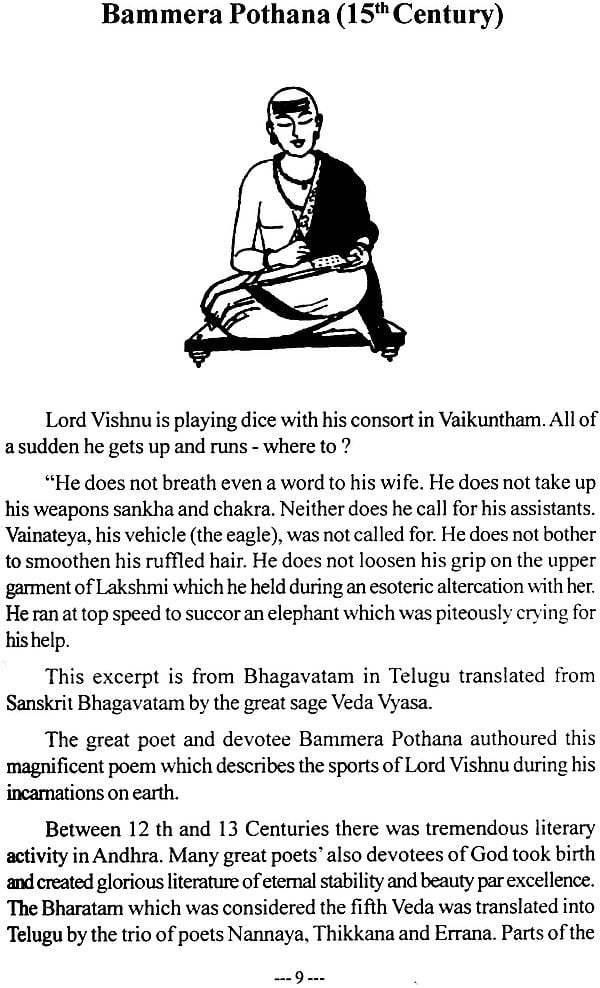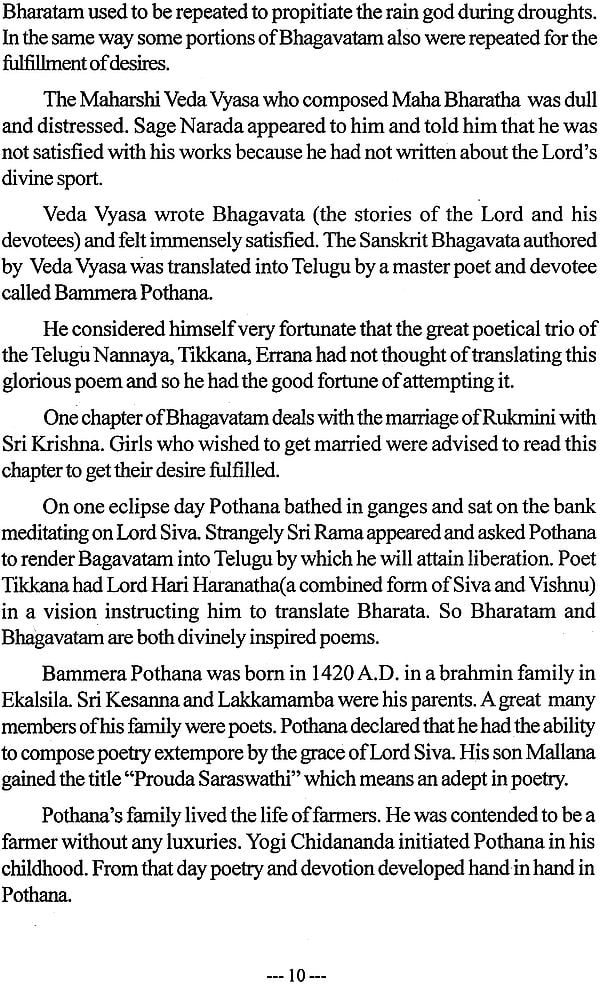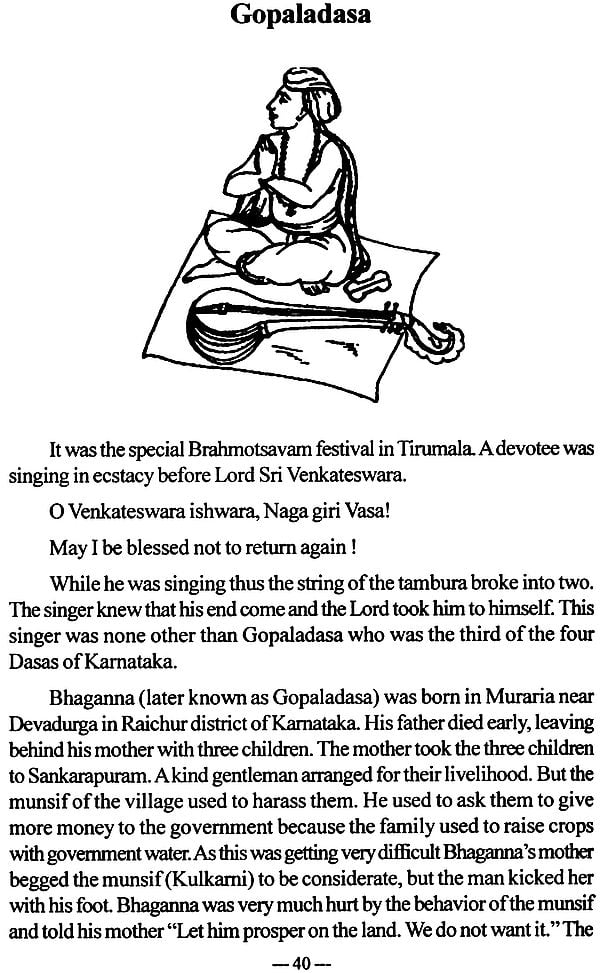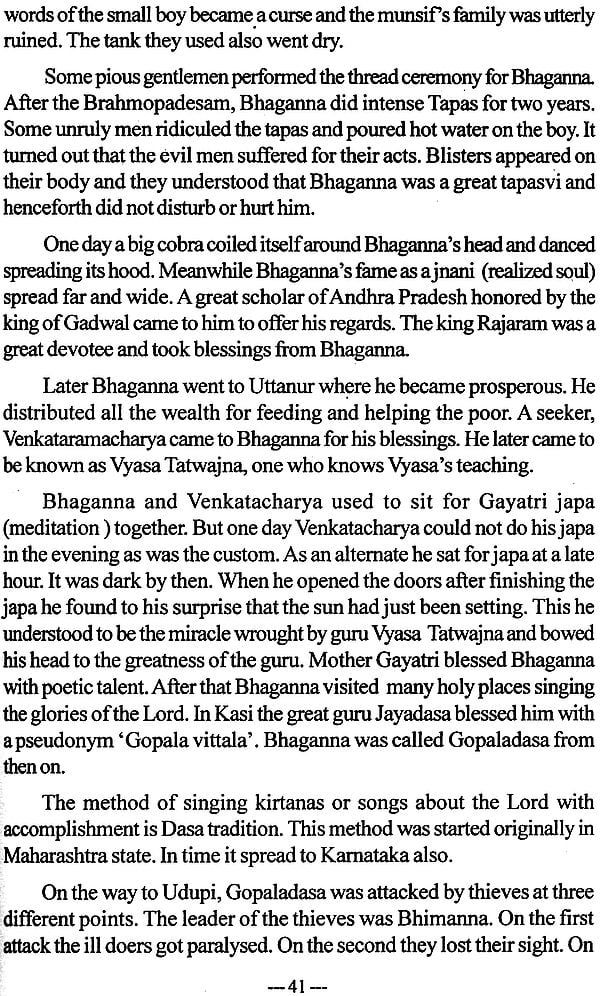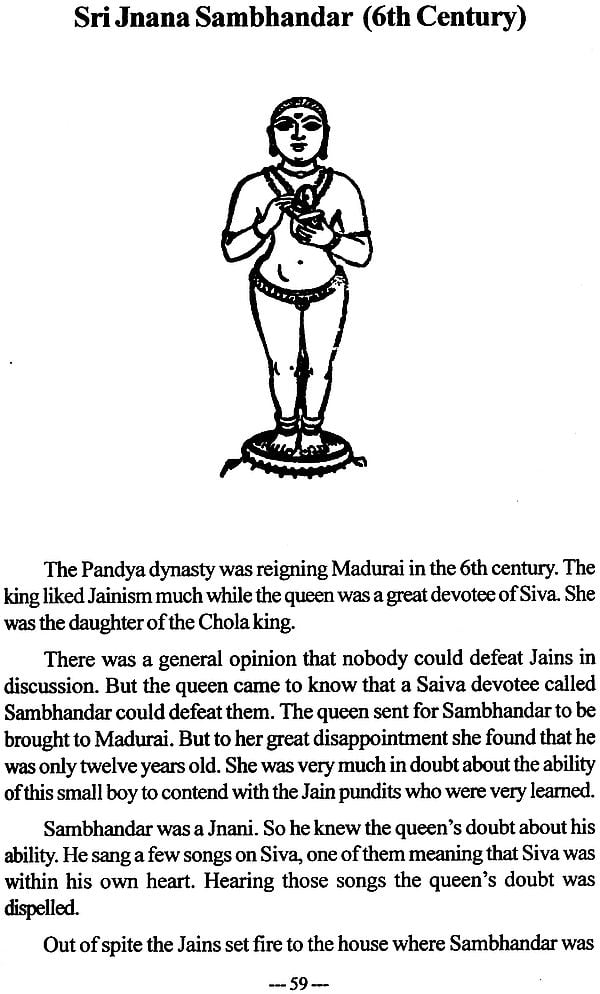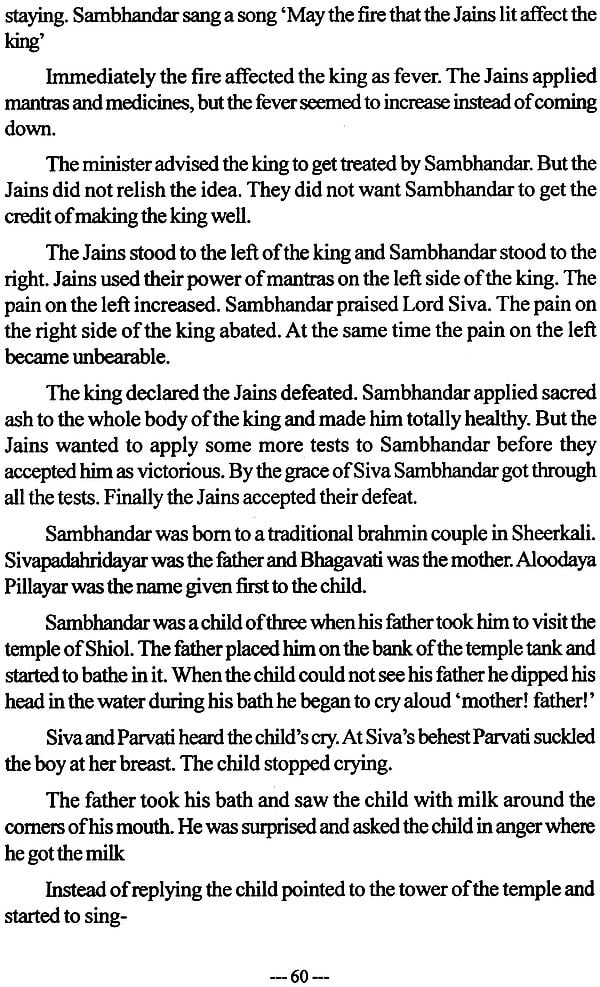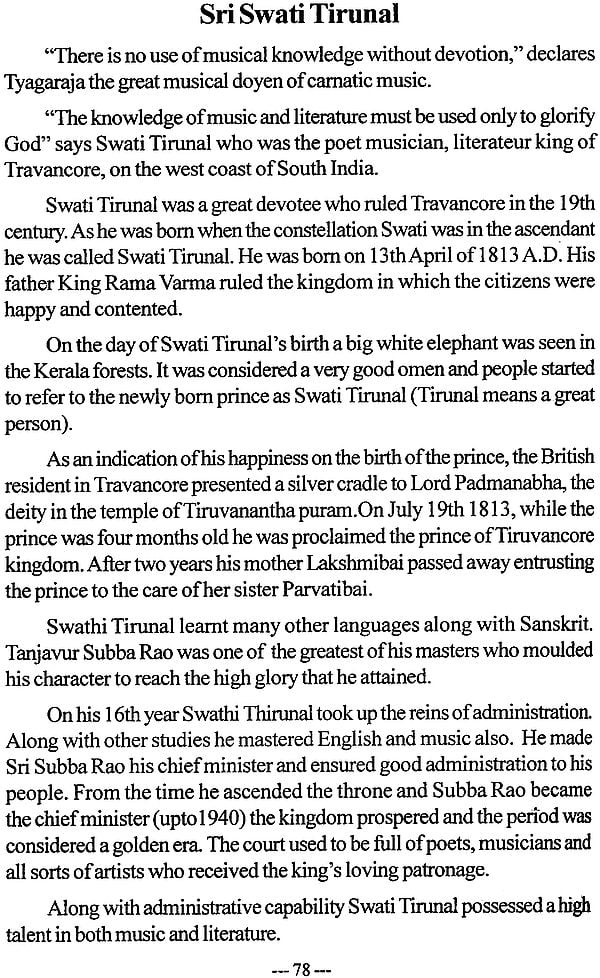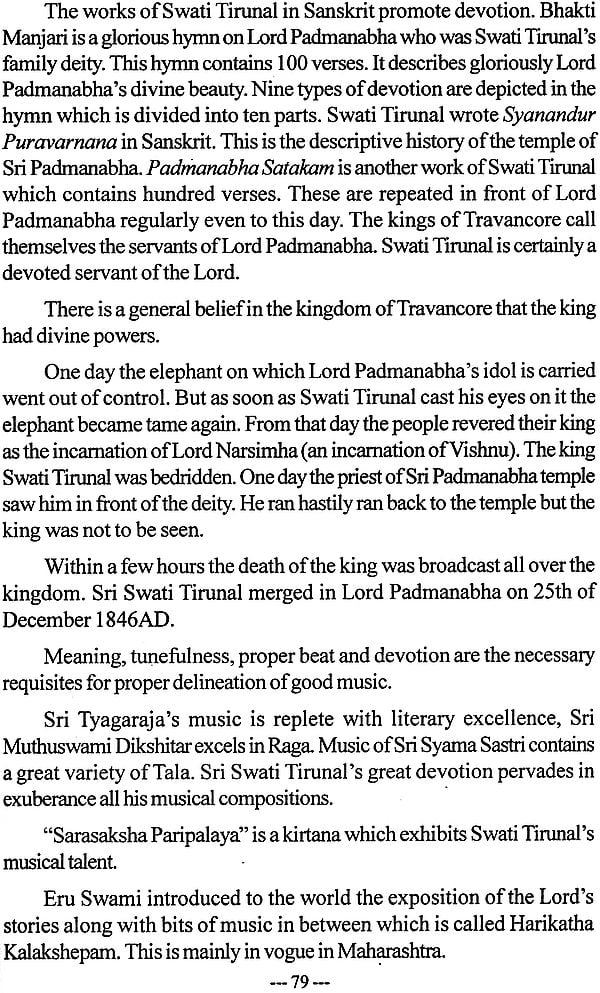
Great Saints of South India
Book Specification
| Item Code: | NAC067 |
| Author: | Sri Ravinuthala Sreeramulu |
| Publisher: | RICHA PRAKASHAN |
| Language: | English |
| ISBN: | 9788187062752 |
| Pages: | 100 (Illustrated Throughout In B/W) |
| Cover: | Paperback |
| Other Details | 8.5 Inch X 5.5 Inch |
| Weight | 140 gm |
Book Description
This slender volume exemplifies the glorious tradition of Bhakti in the holy saints from Andhra, Tamilnadu, Karnataka and Maharashtra. It outlines the fascinating lives of these saints, glorious exemplars of India’s spiritual traditions, highlighting the enduring features of their individual devotion and perception of godhead. Though the book strives to condense the lives of these saints, it does so without sacrificing the essentials.
The saints represent both Shaivites and Vaishnavites without partisan attitude. It includes also women saints, Venkamamba and Kafraikkal Amma. Their lives show the sacramental value to marriage and suggest perhaps, a more meaningful alternative, to the strident assertions of feminist freedom.
The book also carries significant extracts from the compositions of these saints demonstrating the fact that the Bhakti movement is also a renaissance of their respective languages. The texts of the saints’ lives are enriched by the literary (“artistic”) inter-texts of their personal compositions.
The first thing which struck me as I started reading the narratives of saints that Sreeramulu garu wrote is the range and variety. Here in one volume we find saints from Andhra, Tamilnadu, Kamataka and Maharashtra. They all exemplify the glorious tradition of Bhakti. In various, though by and large similar ways, these saints demonstrate the primacy of Bhakti marga. “Kaliyuga Bhakti marga” declared Paramahamsa Ramakrishna. Once I dug deep into the text, I realized the author’s artless art of telescoping and condensing the lives of these saints without sacrificing the essentials. Sreeramulu garu compresses the fascinating lives of these saints, glorious exemplars of India’s spiritual traditions, highlighting the enduring features. And the saints represent both Saivites and Vaishnavites without any perceptible partisan attitude. Moreover, there is also the presence of women saints, Venkamamba and Karaikkal Amma. Their lives show the sacramental value of marriage and suggest perhaps, an alternative, to strident assertions of feminist freedom At every point Sreeramulu garu cites significant extracts from the compositions of these saints demonstrating the fact that the Bhakti movement is also a renaissance of language(s). The texts of the saints’ lives are enriched by the literary (“artistic”) inter texts of their compositions. These “inter texts” emerge from and are inextricable parts of the saints lives so that the one mirrors the other. It is this dimension that makes these lives sagas of spiritual realization in the midst of a complex social structure, stratified and rigid. In short, social radicalism marks these saints. “Bhaktas are all of one caste” said Sreeramulu. This book is the English rendering of the original in Telugu. Taking its popularity of the Telugu original-now in its 4th edition- this English rendering is introducing it a wider reading public. The translator Smt. Sonthi Anasuyamma garu is a seasoned translator who like Sri Ramulu garu himself received the abundant grace of Bhagavan Sri Ramana Maharshi. The translation while remaining loyal to the original is also matched by its lucid idiomatic language. Perhaps this need not be a surprise, for Smt. Anasuyamma garu has done extensive translation work and the present one is one more example of the art of an experienced translator. I am particularly struck by the skill with which she translated the poems, songs etc. Her inwardness with English is evidently excellent.
I feel privilaged to write these few lines and express my gratitude to both Sriramulu garu and Smt. Anasuyamma garu for associating me with this.
| Preface | 8 | |
| Bammera Pothana (15th Century) | 9 | |
| Sri Tyagaraja Swami | 13 | |
| Sri Narayana Tirtha | 17 | |
| Bhadrachala Ramadas (1620-1680) | 20 | |
| Sri Annamacharya (1408-1503) | 23 | |
| Kshetrayya | 25 | |
| Tarigonda Venkamamba | 28 | |
| Toomu Narasimhadasu (1790-1833) | 30 | |
| Sri Purandaradasa (1484-1561) | 34 | |
| Vijayadasa | 37 | |
| Gopaladasa | 40 | |
| Jagannathadasa | 43 | |
| Kanakadasa | 46 | |
| Basaweswara (12th Century) | 49 | |
| Akka Mahadevi | 51 | |
| Sri Appar (7th Century) | 53 | |
| Sri Manikyavachakar (4th Century) | 56 | |
| Sri Jnana Samabhandar (6th Century) | 59 | |
| Sundara Murthy | 63 | |
| Nandanar | 67 | |
| Nammalwar | 70 | |
| Karaikal Amma | 73 | |
| Kulasekhara Alwar (8th Century) | 76 | |
| Sri Swati Tirunal | 79 | |
| Tiruppan Alwar | 81 | |
| Sri Jnana Dev | 83 | |
| Saint Tuka Dev | 86 | |
| Saint Eknath | 89 | |
| Gora Kumbhara (The Potter Gora) | 92 | |
| Saint Namdev (1270-1350) | 94 | |
| Saint Samartha Ramadas (1608-1680) | 97 |
